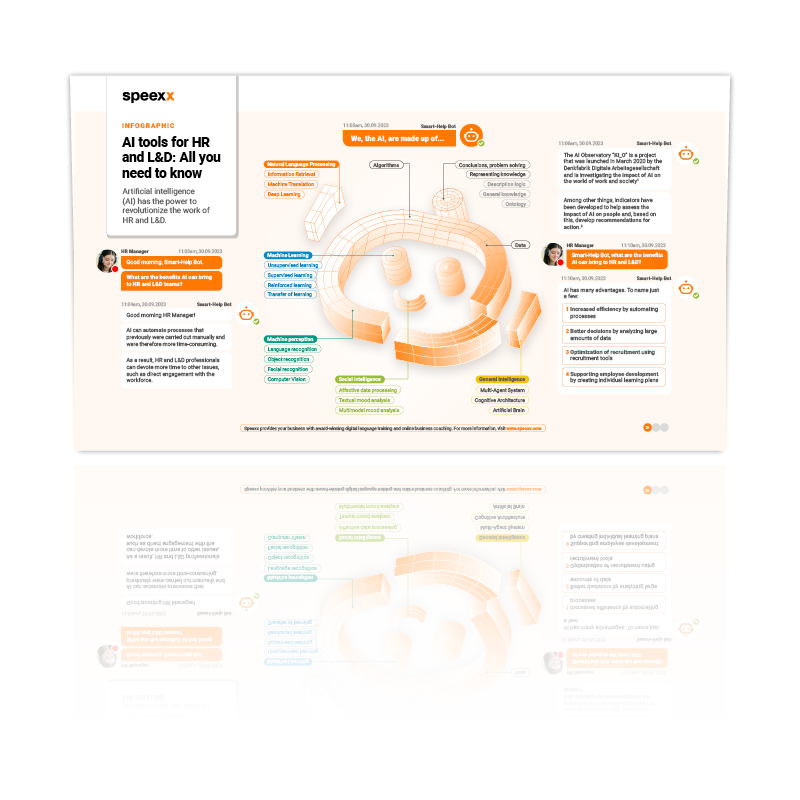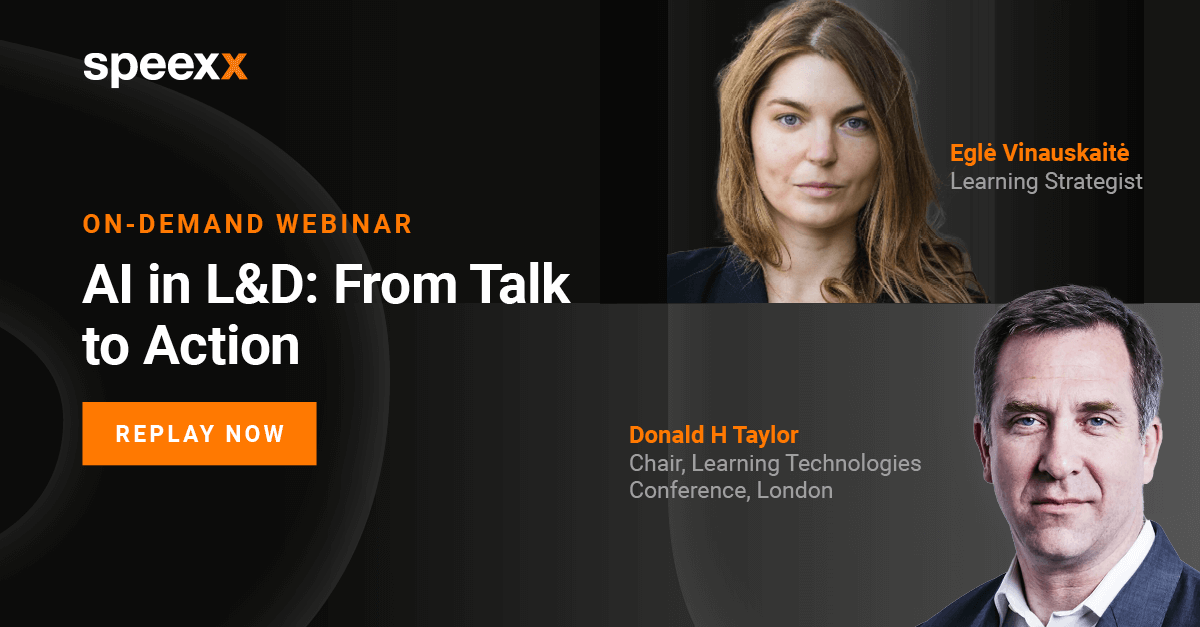Artificial intelligence has dominated conversations in learning and development this year, sparking excitement, anxiety, and a flood of experimentation. From chatbots that write training modules in seconds to algorithms that recommend personalised learning paths, AI’s promise seems limitless. Yet, as many in the profession are beginning to realise, potential doesn’t always translate into performance. The reality is more complex – and more interesting.
A new report by Donald H. Taylor and Egle Vinauskaite, AI in L&D: The Race for Impact, digs beneath the hype to uncover where AI is genuinely moving the needle. Drawing on survey data, expert insights, and real-world examples, the report reveals that while awareness of AI in learning and development is high, measurable impact remains uneven.
This blog unpacks the report’s main talking points – what’s driving progress, what’s holding it back, and how L&D professionals can turn curiosity into meaningful change.
The Current State of AI in Learning and Development
The report AI in L&D: The Race for Impact describes 2025 as a turning point—the moment AI in learning and development moved from novelty to normality. For the first time, more than half of L&D professionals surveyed said they’re actually using AI, not just dabbling with it. In fact, usage has jumped by 14% in the past year, with 54% now putting AI to work in some way.
Still, that progress comes with a reality check. As the authors note, “While enthusiasm is widespread, most organizations are still experimenting rather than implementing.” It’s a familiar story across the workplace: plenty of pilots, few fully integrated solutions. Many teams are chasing innovation, but real impact will depend on how well AI gets woven into everyday learning strategies—not just how many tools are tested.
In other words, AI in learning and development has reached mainstream awareness, but maturity is still to come. The question has shifted from if to how – and that’s where the real race begins.
Beyond Content Creation – Where AI in Learning and Development Delivers Real Value
The report makes it clear that the real power of AI in learning and development isn’t just about speeding up content creation. While tools that draft quizzes or auto-generate text are useful, the real value emerges when AI enhances productivity, personalization, and performance. A matrix in the report breaks these into three key areas of impact.
First, productivity – AI saves time by automating the manual work that slows L&D teams down: transcription, tagging, summarising feedback, or generating first-draft materials. Next, personalization – AI helps tailor learning experiences to individual needs, analysing behaviour and progress to recommend the right next step. Finally, performance – the ultimate goal. AI can connect learning to measurable business outcomes, spotting gaps, predicting future skill needs, and showing where development has a direct effect on results.
As the authors write, “Generative AI boosts efficiency; predictive AI drives strategic insight.” In other words, one streamlines the present, the other shapes the future. When these two forms work together, AI becomes more than a tool – it becomes a bridge between learning and business performance, linking what people learn with how the organization grows.

The Key AI Tools Revolutionizing HR and L&D
The Barriers Holding AI in Learning and Development Back
For all the excitement, the report makes it clear that AI in learning and development still faces some stubborn obstacles. The five biggest? Skills, data, ethics, alignment, and technology.
First, the skills gap. Many L&D professionals remain unsure about how to use AI effectively. The report notes that while confidence is growing, it’s uneven – those who’ve experimented more tend to trust it more. For the rest, uncertainty keeps them on the sidelines.
Then there’s data. Privacy, security, and messy systems still top the list of concerns. Most organisations simply don’t have the infrastructure or clean data needed to make AI work at scale. Until that changes, integration will remain patchy.
Add to that ethical worries – bias, transparency, ownership of content – and strategic misalignment, where AI projects run without a clear link to business goals. The final hurdle is tech fragmentation: too many disconnected tools, not enough integration.
Ultimately, these challenges aren’t just technical – they’re cultural. As the authors argue, L&D must evolve from content creators to data-informed consultants. The real value lies not in producing material faster but in using AI to interpret data, guide decisions, and prove impact where it matters most.
The Human Side of AI in Learning and Development
For all the statistics and strategy, the report makes one thing clear – success with AI ultimately depends on people. Behind every tool and dashboard is a learning professional trying to make sense of what AI means for their work, their learners, and their own future.
The research shows a split between optimism and unease. Many in L&D are energised by the creative possibilities AI offers – faster content creation, personalised learning paths, sharper data insights. But there’s also anxiety about relevance and control. Some worry that AI might automate parts of their role before they’ve even had the chance to adapt.
Taylor and Vinauskaite argue that the real challenge isn’t replacing people with machines – it’s redefining what L&D professionals do best. AI can take care of repetition and analysis, freeing people to focus on empathy, coaching, storytelling, and the human side of learning.
In short, the profession’s future depends not on keeping up with AI, but on working alongside it. Those who learn to blend technology with humanity will shape the next generation of learning – not be replaced by it.
Winning the Race for Impact – How to Make AI in Learning and Development Work
The report sets out a clear roadmap for anyone serious about moving from hype to results. It outlines four stages that mark the journey from curiosity to real impact: Understand, Experiment, Integrate, Measure.
First comes understanding – building basic AI literacy across L&D teams so people can speak the language and spot opportunities. Then experimenting – testing small, low-risk use cases to learn what works in your specific context. From there, it’s about integration – weaving AI into everyday learning systems and workflows, not just treating it as an add-on. Finally, measurement – tracking outcomes to prove business value and continuously improve.
As the authors put it, “The race is not to adopt AI fastest, but to prove its impact soonest.” Early adopters are already showing how this can be done: using AI-driven analytics to identify learners at risk of disengaging or creating adaptive pathways that respond to each person’s progress in real time.
The message is simple – success with AI in learning and development depends on aligning technology with human outcomes. When AI enhances understanding, insight, and performance, rather than replacing them, that’s when the real transformation begins.

Watch this webinar to explore how your peers are using AI to drive real learning impact.
Conclusion
AI in learning and development has moved beyond the buzz. What started as curiosity and quick experimentation is now becoming a more strategic effort to connect learning with performance. The focus is shifting from using AI for convenience to using it for measurable value – automating the routine, personalising the experience, and linking learning outcomes to real business results.
The report reminds us that AI is a performance enabler, not a replacement for expertise. Its greatest strength lies in helping people and organisations make smarter decisions, faster. But to achieve that, L&D teams must combine data, insight, and human judgment.
Ultimately, AI’s role in L&D will be defined not by the tools we use, but by the impact we create – and the difference that impact makes to the people who learn and the businesses they help grow.
If you’d like to dig deeper into the findings, you can read the full report AI in L&D: The Race for Impact by Donald H. Taylor and Egle Vinauskaite here.

